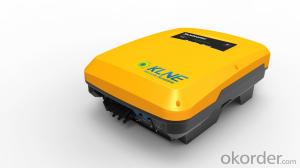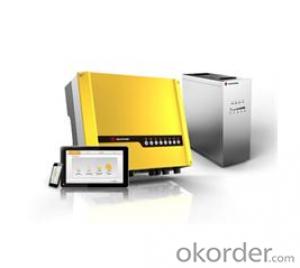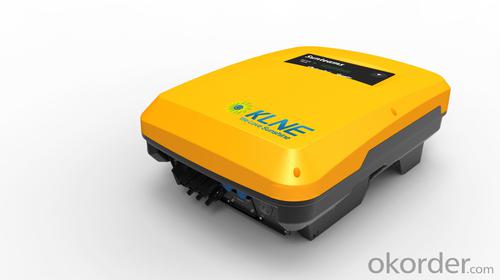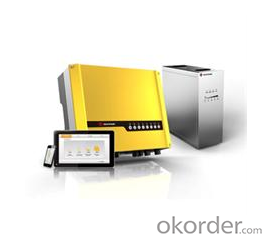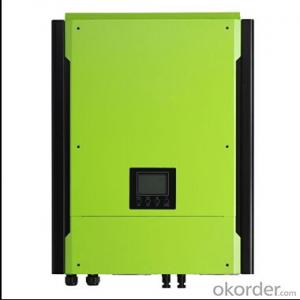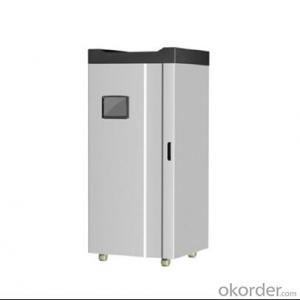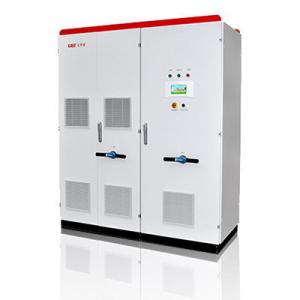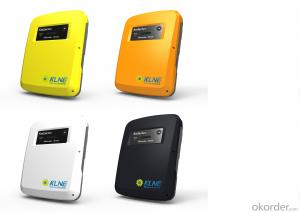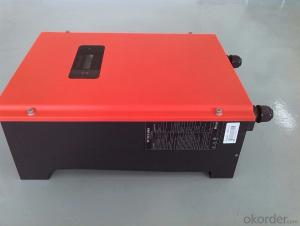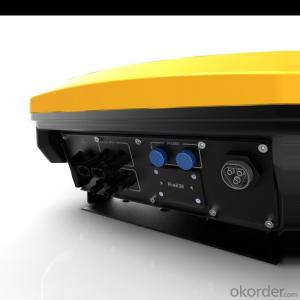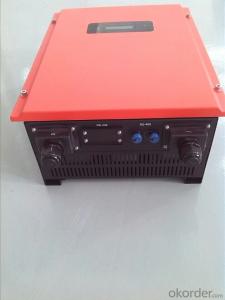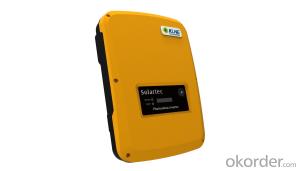40 Kw Solar Inverter Off Grid Type Solo-5000 Series
- Loading Port:
- Shanghai
- Payment Terms:
- TT OR LC
- Min Order Qty:
- 10 unit
- Supply Capability:
- 1000 unit/month
OKorder Service Pledge
OKorder Financial Service
You Might Also Like
Product Description:
This system can keep 10 energy-saving bulbs with 15W working for 5 hours per day and a 5W radio working for 8 hours a day. The AC load can keep a 33in color TV (90W) working for 5 hours, a 70W phonograph record machine working for 5 hours, a 200L fridge (180W) working a whole day, a fan less than 60W running for 5 hours, a 300W computer working for 4 hours, two 100W laptops working for 5 hours, a 1000W water heater running for 1 hour, and another 500W appliance running for 3 h.
It can work for 3 successive rainy days.
● System voltage: 110V
● Output: 220VAC/50Hz
● Power: 5000VA
● Dimensions of the box: 600 X 2000 X 600mm
● Net weight: 255kg
Product Datasheet:
Main Accessories | Specifications | No. | Notes |
Inverter | Solo-5000 | 1 | Standard |
PV modules | Polysilicon 85Wp | 40 pieces | Optional |
Storage battery | Lead acid, maintenance-free, 2V/450Ah | 55 pieces | Optional |
Controller | Solo-VS110V/50A | 1 unit | Optional |
PV accessories shelf | Customized | 1 set | Optiona |
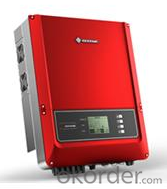
Product Advantages:
Powered by DC current
Can used out of doors
High effiency and low noise
FAQ
What is your payment terms?
We accept T/T payment, normally we need 20% T/T in advance, 80% payed before shipment.
What is your packing system?
We put the sistem in the wooden box.
Can you do OEM service?
Yes we can, but we need to do it with a certain order quantity.
- Q: Can a solar inverter be used in grid-tied systems?
- Yes, a solar inverter can be used in grid-tied systems. In fact, a solar inverter is an essential component of a grid-tied system as it converts the direct current (DC) produced by the solar panels into alternating current (AC) that can be fed into the electrical grid. This allows for the efficient utilization of solar energy and enables homeowners or businesses to offset their electricity consumption with solar power, potentially even earning credits for excess energy produced.
- Q: Can a solar inverter be used in a mobile or RV application?
- Yes, a solar inverter can be used in a mobile or RV application. A solar inverter converts the direct current (DC) produced by solar panels into alternating current (AC) that can be used to power appliances and devices. This makes it suitable for providing electricity in a mobile or RV setting where solar panels are commonly used to generate power.
- Q: What is the role of a grid monitoring feature in a solar inverter?
- The role of a grid monitoring feature in a solar inverter is to constantly monitor the electrical grid to ensure that the solar power generated by the inverter is synchronized with the grid's voltage and frequency. This feature enables the inverter to safely and efficiently inject solar power into the grid, while also providing protection against grid faults and ensuring compliance with grid regulations.
- Q: What is the impact of a solar inverter on the overall system cost?
- The overall system cost can be significantly impacted by a solar inverter. An essential component of a solar power system, the solar inverter converts the direct current (DC) generated by solar panels into alternating current (AC) for powering electrical devices or feeding back into the grid. The cost of a solar inverter varies based on its capacity, efficiency, and brand. Generally, more advanced and efficient inverters tend to be pricier. However, investing in a high-quality inverter can lead to long-term savings and improved system performance. Considering the size of the solar power system is important. Inverters have capacity limits, so selecting the right-sized inverter is crucial for optimizing energy production and system efficiency. An undersized inverter can restrict performance, while an oversized one may result in unnecessary additional costs. The quality and reliability of the inverter are also significant factors. A well-built and reliable inverter can minimize maintenance and repair expenses, ensuring a longer lifespan for the solar power system. Furthermore, advanced features like monitoring capabilities and grid integration functionalities can enhance system performance and provide valuable maintenance and troubleshooting data, though they may increase overall system cost. Additionally, the efficiency of a solar inverter can impact the overall system cost. Higher efficiency inverters can convert more DC power into usable AC power, increasing energy production and potentially reducing the number of required solar panels. This can result in cost savings in terms of panel purchase and installation. In conclusion, while the cost of a solar inverter is an important factor in overall system cost, it is crucial to balance it with considerations such as capacity, efficiency, reliability, and additional features. Investing in a properly sized, high-quality inverter can lead to long-term savings, improved system performance, and higher energy production, maximizing the value and benefits of a solar power system.
- Q: How does a solar inverter prevent islanding?
- A solar inverter prevents islanding by continuously monitoring the grid's voltage and frequency. If the inverter detects a deviation from the normal range, it immediately disconnects from the grid to avoid supplying power to an isolated island. By maintaining synchronization with the grid, the inverter ensures that it only operates when the grid is active, preventing the risk of islanding and enhancing grid stability and safety.
- Q: What is the role of a solar inverter in a battery storage system?
- The role of a solar inverter in a battery storage system is to convert the direct current (DC) electricity produced by the solar panels into alternating current (AC) electricity, which is compatible with the electrical grid and can be used to power household appliances or feed back into the grid. Additionally, the solar inverter manages the charging and discharging of the batteries, ensuring efficient energy storage and usage.
- Q: What is the role of ground fault protection in a solar inverter?
- The role of ground fault protection in a solar inverter is to safeguard against electrical faults that occur when an unintended ground connection is made in the system. It detects any leakage of current to the ground and quickly disconnects the circuit to prevent the risk of electric shock or damage to the equipment. Ground fault protection ensures the safety and reliability of the solar inverter, as well as the overall solar power system.
- Q: What is the role of maximum power control in a solar inverter?
- The role of maximum power control in a solar inverter is to optimize the power output of the photovoltaic (PV) system by continuously tracking the maximum power point (MPP) of the solar panels. This control mechanism ensures that the inverter extracts the maximum amount of energy from the PV array, despite variations in solar irradiation and temperature. By constantly adjusting the inverter's operating conditions to match the MPP, maximum power control maximizes the overall efficiency and performance of the solar power system.
- Q: Can a solar inverter be used in a floating solar system?
- Yes, a solar inverter can be used in a floating solar system. The purpose of a solar inverter is to convert the direct current (DC) generated by solar panels into alternating current (AC) that can be used to power electrical devices. In a floating solar system, the solar panels are mounted on floating platforms or structures on water bodies. The solar inverter is still required to convert the DC power generated by the panels into AC power that can be used by the electrical grid or connected devices.
- Q: Can a solar inverter be used with a hybrid solar system?
- Yes, a solar inverter can be used with a hybrid solar system. A hybrid solar system combines solar power with other power sources, such as batteries or a backup generator. The solar inverter converts the direct current (DC) electricity generated by the solar panels into alternating current (AC) electricity, which can be used to power appliances and devices. Whether it is a grid-tied, off-grid, or hybrid solar system, a solar inverter is an essential component for converting and utilizing the solar energy effectively.
Send your message to us
40 Kw Solar Inverter Off Grid Type Solo-5000 Series
- Loading Port:
- Shanghai
- Payment Terms:
- TT OR LC
- Min Order Qty:
- 10 unit
- Supply Capability:
- 1000 unit/month
OKorder Service Pledge
OKorder Financial Service
Similar products
Hot products
Hot Searches
Related keywords
